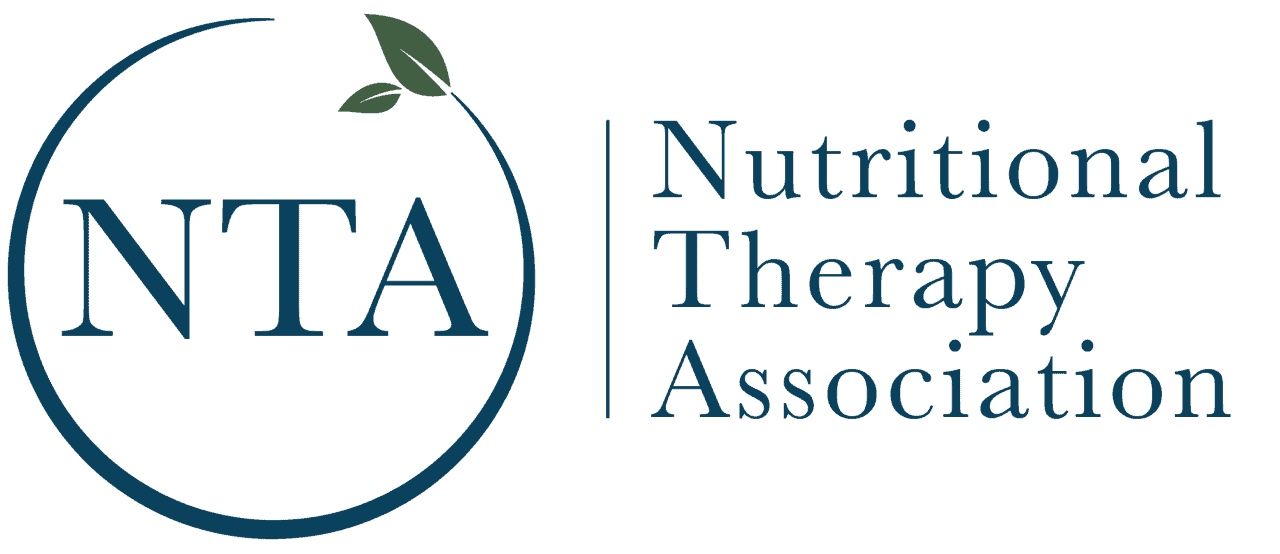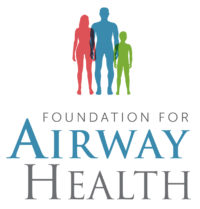Have you ever wondered if being a mouth breather is bad for your health? As a myofunctional therapist, this is one of the most common questions I encounter. The answer is a resounding yes! Mouth breathing can lead to a host of health issues, from chronic stress to poor oxygenation of your body. Drawing on the insights of experts like Patrick McKeown, whose TED talk “Shut Your Mouth and Change Your Life” sheds light on this very topic, we’ll explore the detrimental effects of mouth breathing and how you can shift towards healthier nasal breathing. In this blog, we’ll discuss why mouth breathing is harmful, whether the habit can be reversed, and practical steps to help you breathe better and live healthier.
The Negative Impact of Mouth Breathing
Physical Health Implications of Mouth Breathing
Mouth breathing, though often overlooked, has significant implications for your physical health. One of the most critical impacts is the constant stimulation of the sympathetic nervous system. When you breathe through your mouth, you activate the body’s “fight or flight” response, which is designed to help you escape from immediate threats, like a saber-toothed tiger. However, when this response is triggered continuously throughout the day, it leads to chronically elevated stress hormones, which can have detrimental effects on your overall well-being.
Furthermore, mouth breathing can disrupt the delicate balance of oxygen and carbon dioxide in your blood. Proper nasal breathing ensures that the right amount of oxygen is delivered to your cells and tissues, promoting optimal function. In contrast, mouth breathing often leads to hyperventilation, reducing carbon dioxide levels and impairing oxygen delivery. This can result in fatigue, poor concentration, and a general sense of malaise.
In addition to affecting your nervous and respiratory systems, mouth breathing can have adverse effects on your cardiovascular health. By breathing through your nose, you can influence the 100,000 miles of blood vessels in your body, promoting better circulation and reducing the risk of hypertension. Nasal breathing also encourages the production of nitric oxide, a vital molecule that helps to dilate blood vessels and improve blood flow.
Overall, the habit of mouth breathing sets off a cascade of negative health effects that extend far beyond the immediate discomfort it may cause. By understanding and addressing this issue, you can significantly improve your physical health and quality of life.
Physiological Effects of Mouth Breathing
The physiological effects of mouth breathing extend far beyond the immediate act of inhaling and exhaling. When you switch from nasal to mouth breathing, it disrupts several key bodily functions that are crucial for maintaining good health and well-being.
One of the primary physiological impacts is on the delivery of oxygen to your cells. Nasal breathing plays a critical role in regulating the balance of oxygen and carbon dioxide in your blood. By breathing through your nose, you ensure that you maintain optimal levels of carbon dioxide, which is necessary for the efficient release of oxygen from hemoglobin to your cells—a process known as the Bohr effect. Mouth breathing, on the other hand, can lead to lower levels of carbon dioxide, reducing the amount of oxygen available to your tissues and organs. This can result in fatigue, diminished cognitive function, and a general sense of decreased vitality.
Moreover, nasal breathing helps to filter and humidify the air you breathe, protecting your respiratory system from irritants and pathogens. The nose acts as a natural air filter, trapping dust, pollen, and other particles that could potentially cause respiratory issues. It also warms and moistens the air, making it easier for your lungs to absorb. Mouth breathing bypasses these protective mechanisms, increasing the risk of respiratory infections, allergies, and other issues related to poor air quality.
Another significant physiological effect of mouth breathing is its impact on the lower airways. Proper nasal breathing helps to keep the airways open and clear, reducing the likelihood of airway obstruction and promoting better airflow. Mouth breathing can lead to a collapse of the airways, especially during sleep, contributing to conditions like snoring and sleep apnea. These conditions not only disrupt your sleep but also have long-term health consequences, such as increased risk of cardiovascular disease and metabolic disorders.
Nasal breathing also supports the activation of the parasympathetic nervous system, which is responsible for the body’s “rest and digest” functions. This state of relaxation aids in digestion, promotes a sense of calm, and supports overall health. Mouth breathing, conversely, keeps the body in a state of heightened alertness, contributing to chronic stress and its associated health problems.
In summary, the physiological effects of mouth breathing are profound and far-reaching. By understanding and correcting this habit, you can improve oxygen delivery, protect your respiratory system, ensure better airflow, and promote a calmer, healthier state of being.
The Reversibility of Mouth Breathing
One of the most pressing concerns for those who realize they are chronic mouth breathers is whether this habit can be reversed. The good news is that, yes, mouth breathing can be reversed by learning to breathe through your nose. However, it is important to understand that while the habit itself can be corrected, some of the long-term effects caused by prolonged mouth breathing, especially those that occur during childhood, may be irreversible.
Reversibility of the Habit
The process of transitioning from mouth to nasal breathing involves retraining your body and developing new habits. Myofunctional therapy is an effective approach that focuses on strengthening the muscles of the face, mouth, and throat to encourage proper nasal breathing. Through a series of exercises and techniques, you can learn to keep your mouth closed and breathe through your nose even during sleep. Additionally, techniques such as Buteyko breathing, developed by Patrick McKeown, can help regulate your breathing patterns and reduce the tendency to mouth breathe.
Irreversibility of Craniofacial Changes
While the habit of mouth breathing can be altered, the structural changes it causes in the craniofacial region, especially during critical developmental periods in childhood, are often permanent. Mouth breathing during childhood can lead to a narrow palate, dental malocclusions, and altered jaw growth. As Patrick McKeown points out in his work, “how you breathed as a child determines how you will look for the rest of your life.” These changes can affect the shape of your face and the alignment of your teeth, and once they have occurred, they typically cannot be fully reversed without orthodontic or surgical intervention.
Addressing Existing Damage
Even though you can’t reverse the structural changes caused by mouth breathing, addressing the habit can still bring significant health benefits. Improving nasal breathing can enhance your overall health, reduce stress levels, and improve your sleep quality. For children, early intervention is crucial to minimize the long-term impact. For adults, adopting nasal breathing can prevent further complications and improve quality of life.
In summary, while you can reverse the habit of mouth breathing and enjoy significant health benefits, it’s important to acknowledge that some structural changes, particularly those affecting craniofacial development, may be permanent. By taking proactive steps to switch to nasal breathing, you can mitigate further damage and enhance your overall well-being.
Identifying Barriers to Nasal Breathing
Before you can successfully transition from mouth to nasal breathing, it’s essential to identify any barriers that might be preventing you from breathing through your nose. Several physical conditions can obstruct nasal passages, making nasal breathing difficult or even impossible. Addressing these barriers is a crucial first step in the journey toward healthier breathing habits.
Common Physical Barriers to Nasal Breathing
- Swollen Nasal Turbinates
– Nasal turbinates are structures within the nose that help filter and humidify the air you breathe. When these become swollen, due to allergies, infections, or other irritants, they can block airflow and make nasal breathing challenging. - Deviated Septum
– The septum is the cartilage and bone that divide the nasal cavity into two nostrils. A deviated septum occurs when this partition is significantly off-center, which can obstruct one or both nostrils and impede nasal breathing. - Nasal Polyps
– These are non-cancerous growths within the nasal passage or sinuses that can cause blockages and restrict airflow, leading to mouth breathing. - Enlarged Tonsils and Adenoids
– Especially in children, enlarged tonsils and adenoids can obstruct the nasal passages and airway, making it difficult to breathe through the nose.
Assessing the Need for Medical Intervention
When encountering these barriers, it’s often necessary to seek a specialist’s help to properly diagnose and address the issue. An Ear, Nose, and Throat (ENT) doctor can conduct a thorough examination to determine the exact cause of the obstruction and recommend appropriate treatment options. This might include:
- Medication: Anti-inflammatory medications, antihistamines, or nasal corticosteroids can reduce swelling and improve airflow.
- Surgery: Procedures such as septoplasty (to correct a deviated septum), turbinate reduction, or removal of nasal polyps may be necessary to clear the nasal passages.
- Tonsillectomy and Adenoidectomy: In cases where enlarged tonsils or adenoids are the cause, surgical removal may be required.
I meet clients all the time who’ve known that they needed to have a deviated septum fixed or turbinate reduction completed, they just didn’t realize how much it was connected to their mouth breathing! If there is any breathing resistance, you will take the path of least resistance and breathe through your mouth.
Methods to Stop Mouth Breathing
Transitioning from mouth to nasal breathing requires a combination of techniques, lifestyle changes, and, in some cases, medical intervention. Here are some effective methods to help you stop mouth breathing and develop healthier breathing habits.
Initial Steps to Stop Mouth Breathing
- Clear Your Nose
– Ensuring that your nasal passages are clear is the first step. Use saline nasal sprays or rinses to keep your nasal passages moist and free from congestion. Regularly blowing your nose gently can also help maintain clear airways. - Practice Correct Breathing Techniques
– Engage in breathing exercises that promote nasal breathing. The Buteyko method, for instance, focuses on reducing the breathing volume and encouraging nasal breathing. Simple exercises like closing your mouth and consciously breathing through your nose for a few minutes several times a day can make a significant difference. - Increase Physical Activity
– Regular exercise can improve your overall respiratory function and encourage nasal breathing. Activities such as walking, running, or yoga can help strengthen your respiratory muscles and promote better breathing habits.
Medical Interventions For Mouth Breathing
- Consider Surgery
– If you have structural issues such as a deviated septum, nasal polyps, or enlarged tonsils that obstruct your nasal passages, surgery may be necessary. Procedures like septoplasty, turbinate reduction, or tonsillectomy can remove these barriers and facilitate nasal breathing. - Work with a Myofunctional Therapist
– Myofunctional therapy involves exercises that strengthen the muscles of the face, mouth, and throat. This therapy can help retrain breathing patterns to support nasal breathing. A therapist can provide personalized exercises and monitor your progress.
Environmental and Lifestyle Adjustments To Stop Mouth Breathing
- Evaluate Your Environment
– Ensure that your living space is free from allergens like dust, pollen, mold, and pet dander. Consider using air purifiers and maintaining a clean home environment. If you have pets, keep them out of the bedroom to reduce exposure to dander, especially at night. - Adjust Your Diet
– Identify and eliminate foods that cause inflammation and congestion. Common culprits include gluten, sugar, alcohol, and dairy. A nutritionist can help you determine which foods might be affecting your nasal passages and suggest alternatives to keep you congestion-free. - Stay Hydrated
– Adequate hydration helps keep your nasal passages moist and reduces the likelihood of congestion. Aim to drink plenty of water throughout the day. - Use a Humidifier
– Adding moisture to the air with a humidifier can help keep your nasal passages from drying out and becoming blocked. This is particularly useful during the winter months or in dry climates.
This is also a big area that I help clients in since I am a nutritionist who is also trained in toxins and chemicals. Sometimes, we have to take one step at a time to identify what environmental or lifestyle issues could be the culprit.
Conclusion
Addressing mouth breathing is crucial for maintaining optimal health and well-being. As we’ve explored, mouth breathing can lead to numerous physical and physiological issues, from chronic stress and reduced oxygenation to long-term structural changes in the face and airway. By recognizing and addressing the barriers to nasal breathing, you can make significant improvements to your respiratory health, sleep quality, and overall vitality.
I encourage you to take a closer look at your breathing habits. If you or someone you know is a habitual mouth breather, consider seeking help from us here at Impact Myofunctional Therapy, or an ENT specialist to identify and address any underlying issues. Simple changes in your environment, diet, and daily routine can also make a substantial difference.
The long-term benefits of correct nasal breathing extend far beyond improved oxygen delivery and reduced stress. By adopting healthier breathing patterns, you can enhance your overall health, increase your energy levels, and promote a sense of calm and well-being. Take the first step today towards better health by prioritizing nasal breathing—your body will thank you for it.
Meet Carmen Woodland
Carmen found this path of passion years ago as a dental hygienist.
Her story is personal and close to home. Her sweet granddaughter, Linzee, was passed back and forth amongst doctors and therapists for years trying to figure out her speech, breathing, sleep, chewing and swallowing issues. It wasn’t until Carmen completed post graduate training that she knew Linzee’s problem was a significant tongue-tie. Bingo.
Fast forward to now. Carmen is a crusader. An international wellness warrior like you’ve never met!
Carmen has continued her wellness education to include certifications in nutrition, toxins, environmental health, blood chemistry and sleep.
Carmen helps tired humans feel better. Yep–that can sound like a pretty generic term, but the results she gets for clients distills down to them feeling like their most amazing self…energetic + vibrant + rested + living without anxiety, dread, and other similar symptoms.
Carmen doesn’t “just do myofunctional therapy.” Her magic happens when she tackles the root cause of poor sleep, digestion, weight gain, snoring, chronic fight or flight, mindfulness and more. It’s “More Than Myo™”!
Regardless of how much myofunctional therapy you do, if your blood sugar regulation is a mess, then sleep won’t be optimized. If you’re trying to solve snoring with weight loss, but can’t lose an ounce, maybe you need to take a look at the vicious cycle of sugar and processed carbohydrate addiction or “adrenal fatigue”. If your digestion is a mess, simply releasing your tongue tie won’t solve the whole equation. If you’re trying to learn how to nasal breathe but are a congested mess, perhaps you need some food sensitivity testing to see where your inflammation is coming from.
This is the work that Carmen and her team at Impact Myofunctional Therapy / Impact Health Restoration work on.
No easy answers. No easy clients.
Carmen works with clients all over the world in her practice.
In addition, she also
- Teaches at the Myofunctional Therapy Training Academy.
- Coaches dental offices on how to implement myofunctional screening into their daily practice
- Speaks in various settings
Carmen is also an airway provider for the Foundation of Airway Health, where she works diligently for the recognition, diagnosis, and treatment of airway-related disorders.
And last but not least, Carmen is a proud member of several professional associations that afford the opportunity to learn so that she can help you. Her professional memberships include:






